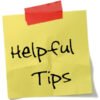On Fridays I will post a Lean related Quote. Throughout our lifetimes many people touch our lives and leave us with words of wisdom. These can both be a source of new learning and also a point to pause and reflect upon lessons we have learned. Within Lean active learning is an important aspect on this journey because without learning we can not improve.
“Email is having an increasingly pernicious effect. Not only is it having a perceptible effect on productivity, it’s skewing what it is we focus on. The immediate increasingly crowds out the important.” — Noreena Hertz
Email has become a huge part of our work lives. It’s easy, it’s fast, and people can read their emails (or not) when they have the time. Email has become the medium of choice for many business communications.
Email was not designed to be a collaboration tool, yet so many people use it that way. From managing projects to troubleshooting a problem, neverending email threads become inefficient, confusing, and bad for productivity. With many collaboration and project management products now available, email should never be the place you turn in order to stay on top of tasks and projects.
I thought I would shares some rules that can help you reduce the inefficiencies that email can cause.
Some “Organizational Rules” to Reduce E-mail Waste
Rule 1 – Limit “CC’s” to only those that are ABSOLUTELY ESSENTIAL. Make a rule that employees can choose to BLOCK all CC e-mails.
Rule 2 – No more than two “cycles” back and forth between correspondents. If the issue is not resolved by that point, USE THE TELEPHONE!
Rule 3 – No unnecessary forwarding of attachments; use a hyperlink instead.
Rule 4 – Always include the POINT and URGENCY of the e-mail in both the subject line and the first few lines of the text.
Rule 5 – Consider using the first few sentences of an e-mail as an ABSTRACT that summarizes the remainder of the communication. Below the abstract, add additional detail with the comment, “More detail follows…”.
Rule 6 – KEEP IT BRIEF! No e-mail should be more than 20 lines in length (consider using a network filter to block any that are longer).
Rule 7 – Start the subject line with “ACTION” whenever immediate action is required by the addressee. Actions should be identified at the beginning of the e-mail.
Rule 8 – Try using the SUBJECT LINE to communicate the ENTIRE message, followed by “EOM” which stands for “End of Message”.
Rule 9 – Limit the number of times during the day that you cleanup or respond to e-mails. Turn off the e-mail alarm, so YOU control when you deal with e-mail.
Fewer interruptions means more time spent at work on value added activities. Using these rules can help email from becoming a wasteful distraction that can cost companies and you lost productivity.
Email was not designed to be a collaboration tool, yet so many people use it that way. From managing projects to troubleshooting a problem, neverending email threads become inefficient, confusing, and bad for productivity. With many collaboration and project management products now available, email should never be the place you turn in order to stay on top of tasks and projects.
I thought I would shares some rules that can help you reduce the inefficiencies that email can cause.
Some “Organizational Rules” to Reduce E-mail Waste
Rule 1 – Limit “CC’s” to only those that are ABSOLUTELY ESSENTIAL. Make a rule that employees can choose to BLOCK all CC e-mails.
Rule 2 – No more than two “cycles” back and forth between correspondents. If the issue is not resolved by that point, USE THE TELEPHONE!
Rule 3 – No unnecessary forwarding of attachments; use a hyperlink instead.
Rule 4 – Always include the POINT and URGENCY of the e-mail in both the subject line and the first few lines of the text.
Rule 5 – Consider using the first few sentences of an e-mail as an ABSTRACT that summarizes the remainder of the communication. Below the abstract, add additional detail with the comment, “More detail follows…”.
Rule 6 – KEEP IT BRIEF! No e-mail should be more than 20 lines in length (consider using a network filter to block any that are longer).
Rule 7 – Start the subject line with “ACTION” whenever immediate action is required by the addressee. Actions should be identified at the beginning of the e-mail.
Rule 8 – Try using the SUBJECT LINE to communicate the ENTIRE message, followed by “EOM” which stands for “End of Message”.
Rule 9 – Limit the number of times during the day that you cleanup or respond to e-mails. Turn off the e-mail alarm, so YOU control when you deal with e-mail.
Fewer interruptions means more time spent at work on value added activities. Using these rules can help email from becoming a wasteful distraction that can cost companies and you lost productivity.
 A Lean Journey
A Lean Journey 





Leave a Comment
Your email address will not be published. Required fields are marked with *